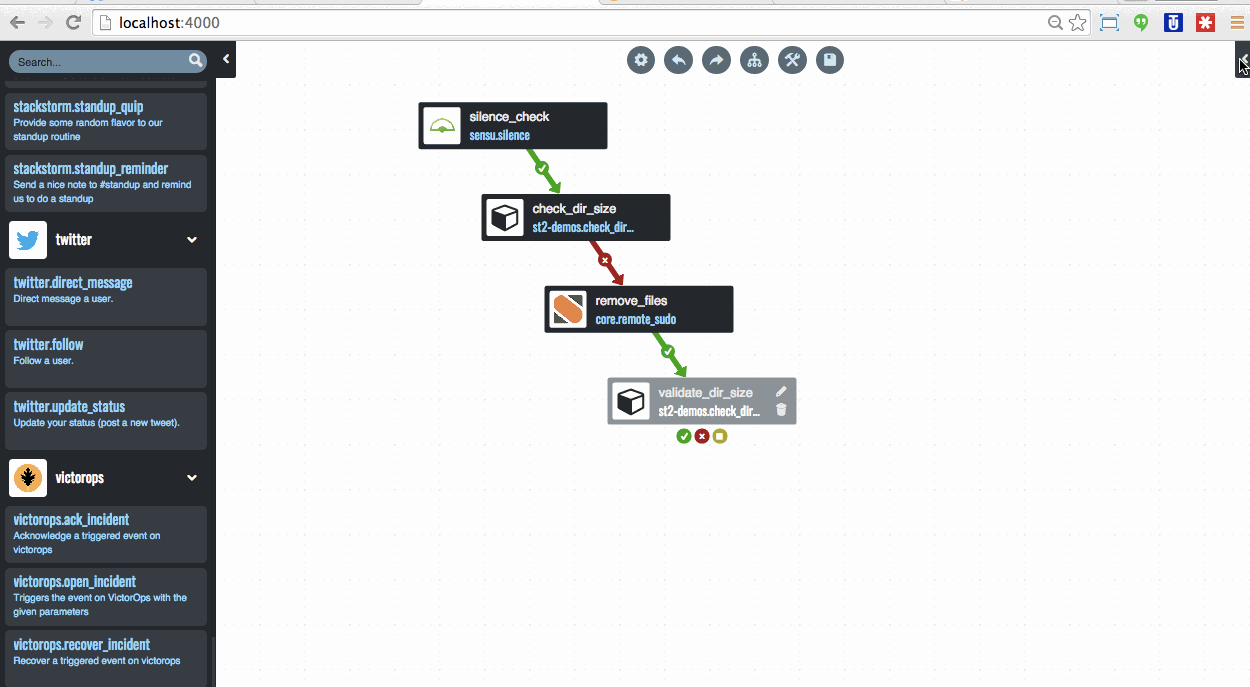September 23, 2015
by Evan Powell
Today we announce StackStorm 1.0 – and release our Enterprise Edition 1.0 release candidate.
Maybe more noteworthy, Netflix is announcing – at the Cassandra Summit which they are helping to keynote as one of the world’s largest Cassandra users – that they use StackStorm to auto-remediate their Cassandra environments.

It has been more than two years since we got StackStorm going. And last November – we open-sourced StackStorm.
Rereading the announcement of that open sourcing, you can see that much is still the same. Perhaps my favorite line – one that I think now many thousands of StackStorm users have embraced – is that:
“StackStorm ties together your existing infrastructure and application environment so you can more easily automate that environment — with a particular focus on taking actions in response to events.”
These days we call that approach Event-Driven Automation and Remediation. An entire community, with its own meet-up, has sprung-up around this approach with speakers from LinkedIn and Facebook and WebEx and of course StackStorm and Lithium and many others as well, talking about how they remediate common situations and use such systems to tie together today’s incredibly complex, large and ever changing environments. Maybe more importantly, these environments convey competitive advantage in a world in which tech billionaires proclaim that “software is eating everything.” And maybe it is.
Today we are excited to share what we have added to StackStorm over the last year – and in particular the usage of StackStorm by some of the world’s best operators of information technology including – again – Netflix.
I’m particularly excited to share a utility we have developed that we call Flow. Flow integrates with StackStorm and enables Enterprise Edition users to visually design and control your entire automation. We know, first hand, how older automation solutions were built and the GUIs they had that, thus far, no DevOps automation solution could touch. We think Flow blows right past them with the first interface to treat infrastructure as code – updating in real time changes to your automation as code as you drag and drop.
Take a look here:

And learn more about Flow here.
Other additions to StackStorm that together comprise the Enterprise Edition are detailed farther down the product page.
For example – role based access controls, 24 x 7 (or 9 x 5) support, and more.
Want to learn more?
Take a look at our site to see many testimonials and best practices and more about how StackStorm is built.
And if you are interested in Cassandra auto-remediation – and want to see, in action, a version of what Netflix is using to keep their environment running with a minimum of risky and annoying human firefighting – please take a look for a blog we are posting today that explains our approach and (you guessed it!) shares as code this operational pattern.
There is so much that has been added in the last year that you’ll just need to dive in yourself to discover it. Don’t worry, we have a Top 10 Additions blog to help. Somehow making all Salt, Ansible, Chef and Puppet actions available via StackStorm – and hence via Flow – only made #9 on my top 10 list. I might put it much higher were I to do it again as we hear again and again how important these integrations are to users.
Grab StackStorm now – a free trial of the Enterprise Edition – officially our 1.0 release candidate (RC) – is available via a few clicks from here on our home page. Or – begin automating now with our Community Edition. It continues to progress quickly with the help of community members like Netflix and many others. With every contribution – many of which are new integrations such as to other bots or monitoring systems or firewalls or other security appliances – StackStorm gets smarter and more valuable.
Join us. Let’s make auto-remediation a reality. Let’s tie our environments together in a much easier to manage way – let’s make infrastructure as code fully realized by sharing operational patterns as code.
Here we go!